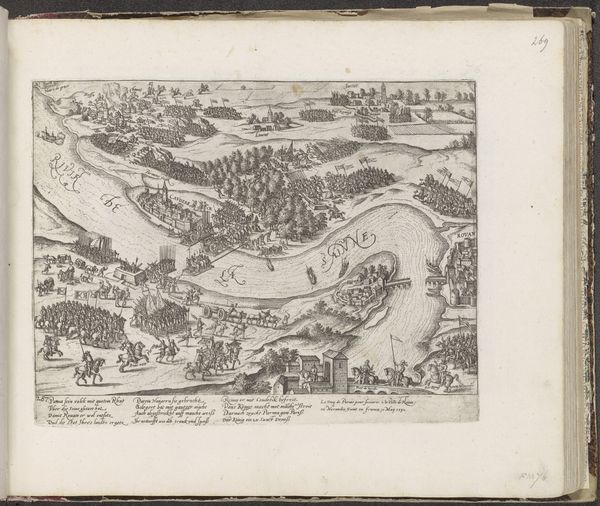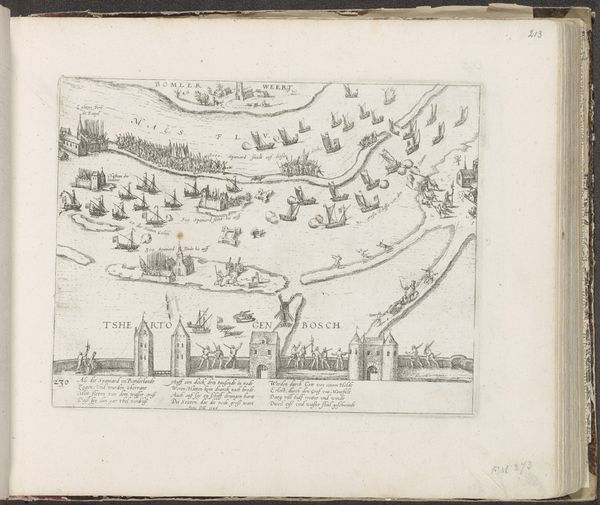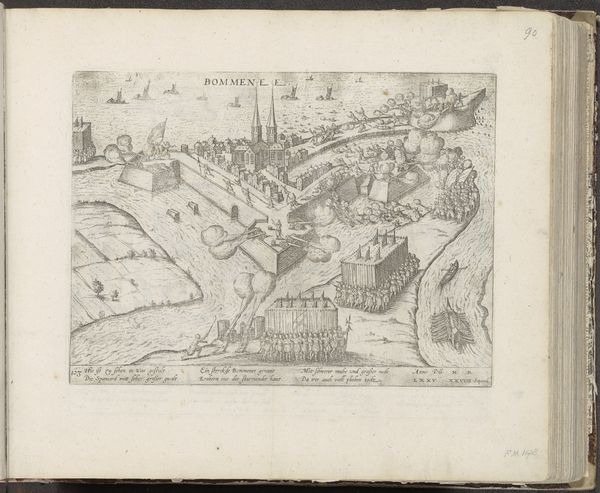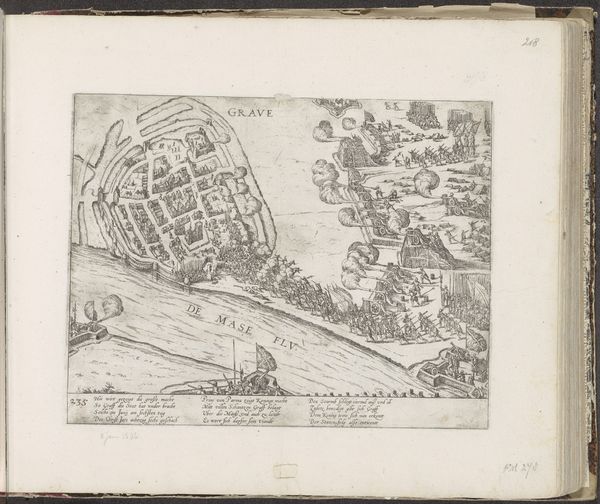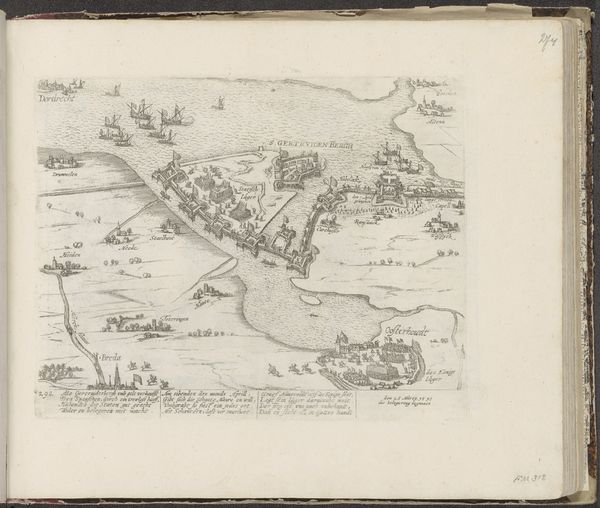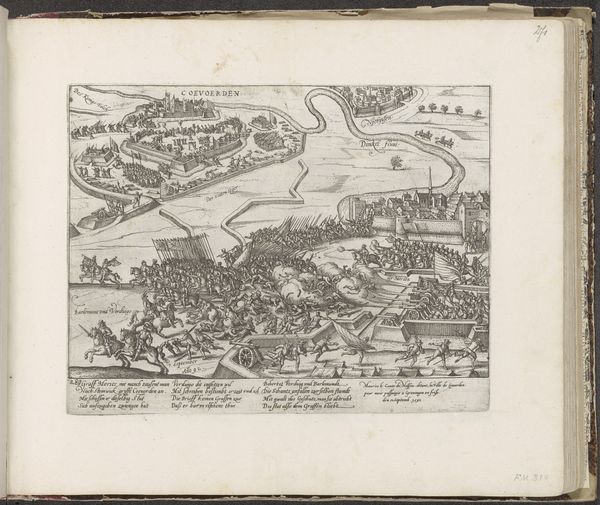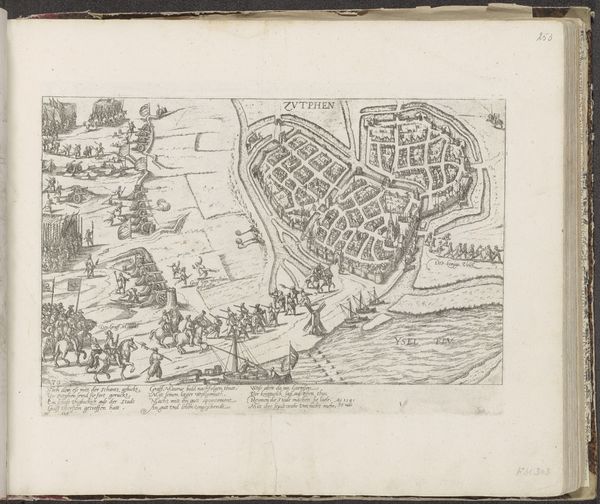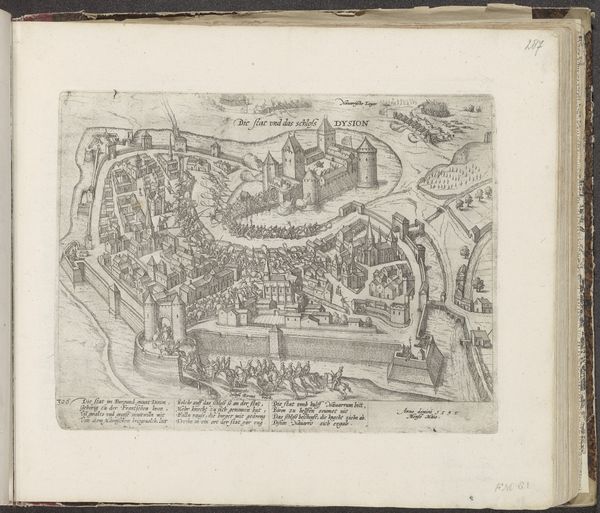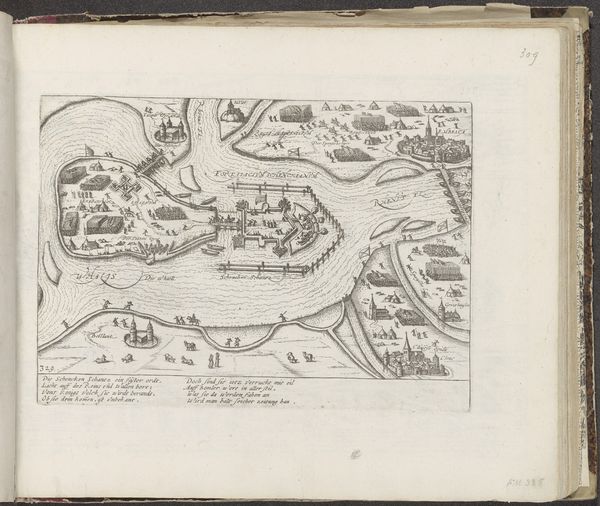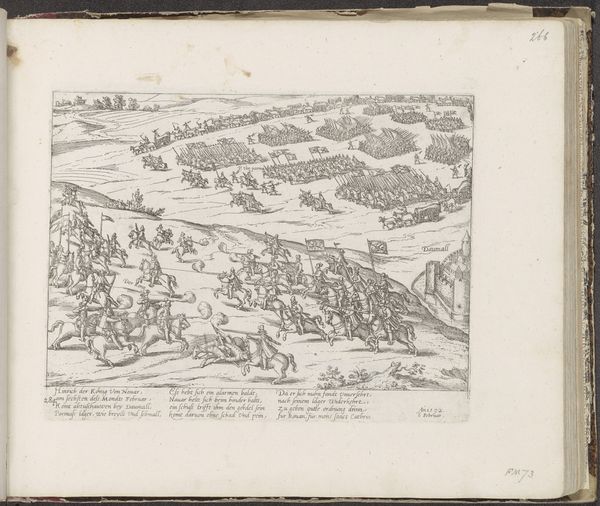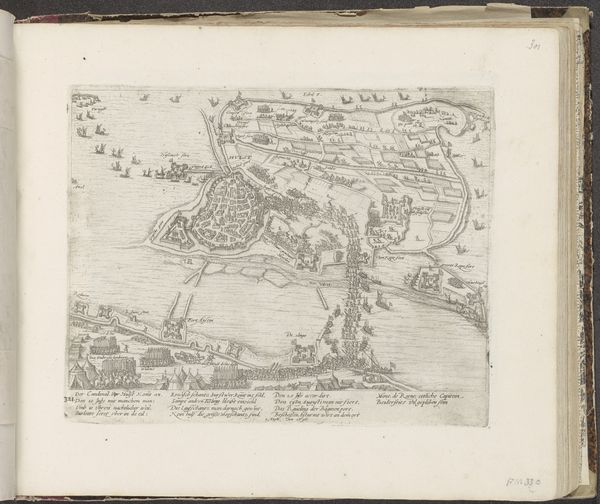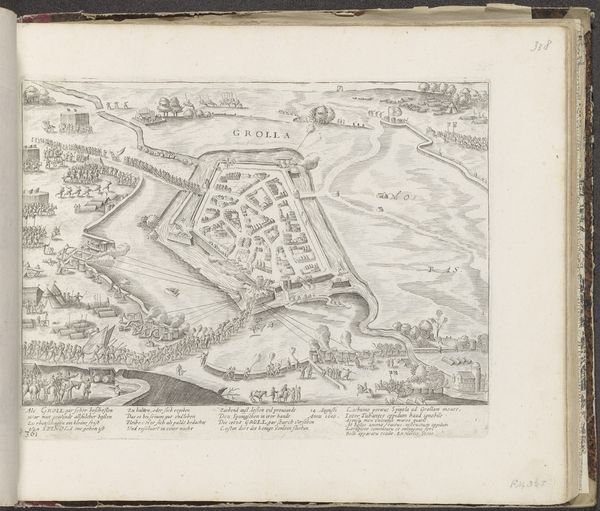
print, etching, engraving
#
dutch-golden-age
# print
#
etching
#
11_renaissance
#
cityscape
#
history-painting
#
engraving
Dimensions: height 216 mm, width 261 mm
Copyright: Rijks Museum: Open Domain
Curator: Immediately, the frenetic energy leaps out. There’s so much implied motion in the scene despite being static. Editor: Indeed. We are looking at an engraving from around 1587-1591 by Frans Hogenberg, titled "Engelsen bij Nijmegen door Parma verslagen, 1586," which translates to "The English Defeated by Parma near Nijmegen, 1586." It's currently held at the Rijksmuseum. The piece depicts a key historical event, the defeat of English forces. Curator: Historical record conveyed through… meticulous labor. The sheer amount of etched line-work involved speaks to a sustained, almost obsessive dedication. One really sees the production, the many hands involved in creating and distributing this image and these messages. Editor: And what’s so remarkable is how Hogenberg balances overall structure with granular detail. Observe how the town is rendered in clear geometric forms, contained and ordered, while the chaotic skirmish below, teeming with individualized figures and weapons. It’s an impactful use of formal contrast to emphasize the perceived order against the reality of warfare. Curator: But the "order" itself is a construct, isn’t it? A carefully managed projection of power achieved through military might and colonial violence. I see not so much objective representation, but strategic propaganda intended for mass consumption. Look at the labor conditions, think about the political motivations involved. Editor: Undoubtedly. Yet the composition also directs the gaze with purposeful arrangements. See how your eye is drawn from the lower skirmish diagonally upwards toward the cityscape of Nijmegen. It uses implied lines created by the river and troop movements to establish spatial relations that tie the elements of land, river, town, and battle into a complete spatial understanding. The technical choices here communicate power and victory. Curator: Power is, in many ways, the most critical "material" present in this image. And printmaking here acts as a powerful mode for disseminating ideas and controlling perceptions, as does the state's military, a state we only know through art's representational labors. Editor: Absolutely. In observing Hogenberg’s organization, the semiotics of the era, and their formal encoding, a clear and specific message rises from history, transformed through artistry. Curator: It leaves one wondering, as it moves from production into history, if the hands who made this print could have imagined this artwork's travels to the present day? Editor: And now we are actively deciphering its complex codes. Very intriguing indeed.
Comments
No comments
Be the first to comment and join the conversation on the ultimate creative platform.

